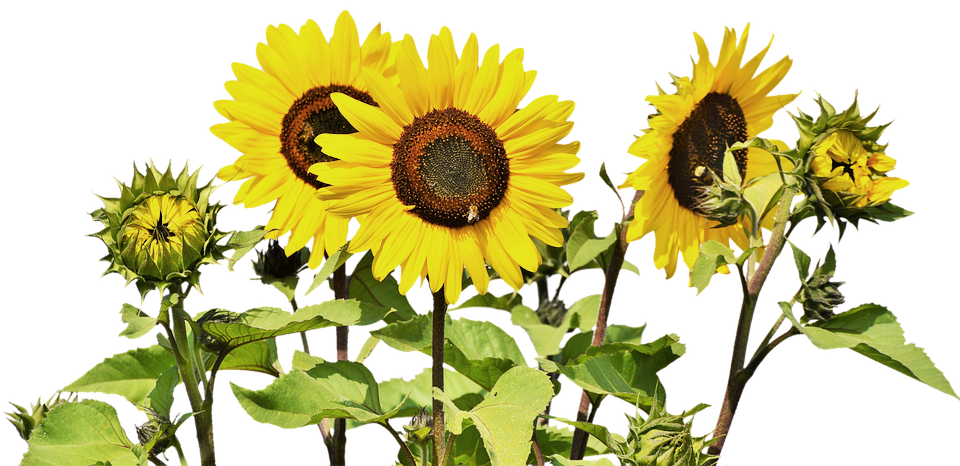
Succulent Container Gardening
By Chris Edmunds
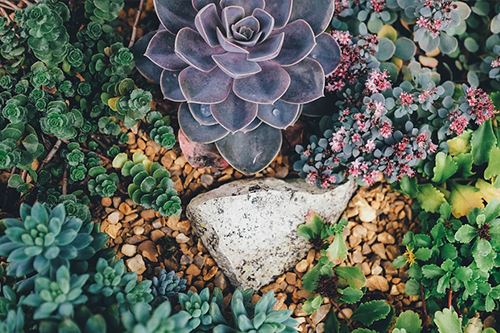
Succulents have taken the world of gardening by storm. These loveable plants are popping up everywhere in magazines, on social media, and in stores. It’s not hard to see why. They are easy to take care of, versatile, interesting, and chic, making them a perfect fit for any home.
Crafty gardeners have found lots of stylish and interesting ways to display and appreciate their succulents. A simple google search will show you hundreds of ideas, from pumpkin planters to wall-mounted picture frames. One of our favorites ways to display them, though, is a timeless classic. Low-maintenance and simply stunning, succulents are made for container gardens. Not only adorable and unique, they can be kept for years to give you long-lasting home decor you’ll love.
Choosing a Container
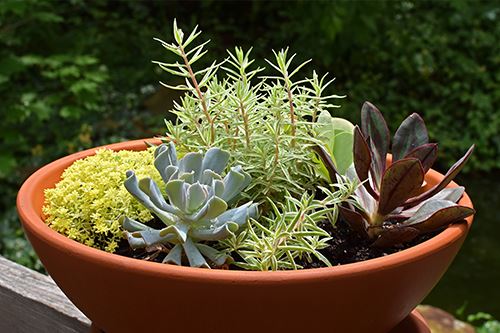 Succulents have sensitive, fibrous roots designed to catch moisture in arid environments. They don’t cope well with soil that remains wet for too long, so you’ll want to choose a container and soil with good drainage.
Succulents have sensitive, fibrous roots designed to catch moisture in arid environments. They don’t cope well with soil that remains wet for too long, so you’ll want to choose a container and soil with good drainage.
Many gardeners will also find more success with their succulents in a container that is more shallow than deep. Most succulents only use the top inches of soil for rooting. They won’t stretch down and drink up the water caught in the layers of soil beneath them like other plants. This leaves soil waterlogged and potentially harmful to roots. To prevent excess moisture, try to pick a pot with less depth.
Past that, it is up to you how you want to display your succulents’ alluring jewel tones and unique textures. Find a container you love that fits where you want to display your plants. Something bolder and more impressive will suit a centerpiece display. Succulents meant to be subtly shown off in a corner might need a container with a bit more nuance.
Even if you fall in love with something without drainage, you can always drill holes into the bottom of the container. Where there’s a will, there’s a way.
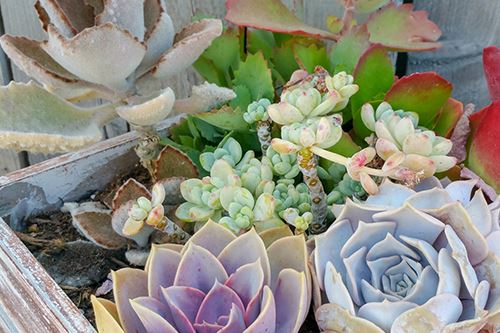 How to Plant a Succulent Container
How to Plant a Succulent Container
Drainage is crucial for healthy succulents, and healthy plants are ones that look best and require less maintenance in the long run. At all cost, avoid leaving your succulents in standing water. This means ensuring that they have soil with great drainage, like a succulent or cactus mix. This will give them the good foundation they need to stay healthy and beautiful. Normal potting soil is fine (choose a light-weight, high-quality one like our KVG Good Stuff Potting Soil, not a heavy one), but you’ll need to water less often. Choosing a shallow container with drainage holes is, again, very important.
Once you begin planting, depending on how “finished” you want it to look right away, feel free to make it crowded. With annuals and tropicals, you need to spread out plants to accommodate their quick growth. Succulents are slow-growing, so you can crowd them more for a fuller appearance. If you like, add a layer of gravel on top of the soil to create a polished look. Colorful aquarium gravel is a great choice for visual appeal.
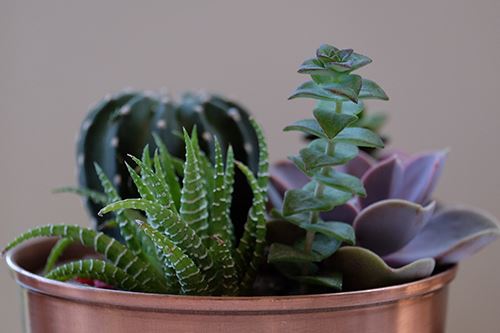 Taking Care of Succulents
Taking Care of Succulents
Succulents rose to popularity because they are incredibly easy to care for. There is a huge number of varieties. Most succulents thrive in dry air and bask in sunlight, but can adapt to shade as well, making them even more versatile. They need minimal maintenance and most will grow gradually over the years.
Water succulents more than a cactus, but let the soil dry out between each time. When you water, keep going until the water flows out of the bottom. This will help to flush out any salts or minerals accumulating on your plant’s delicate roots. Indoors, succulents need water approximately once a month. Outdoors it’s more like once a week in warm weather, maybe twice a week in hot weather, but it’s always a good idea to feel the soil, or the weight of the pot for moisture rather than use a set schedule. Don’t water until you know the soil has dried out.
Saving Your Succulents
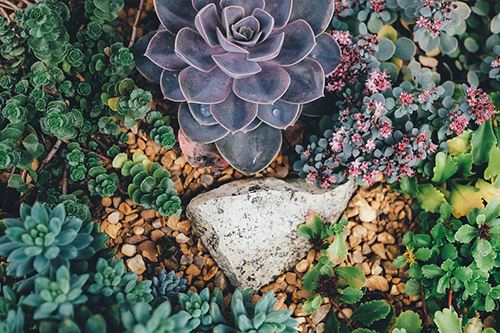
Each succulent plant itself might seem a little expensive when you compare them to annuals. The difference, though, is that annuals are only made to last a season. Succulents, on the other hand, are built to last for years and years of slow growing when given proper care.
Keep your succulents over winter in an uncovered south or west window with no trees or shrubs blocking the light. They won’t need nearly as much water as they do when they’re growing outside. Listen to what your plant needs by checking the soil once a week. Allow the soil to dry out completely before watering. When temperatures warm up and chances of frost are gone, you can move your succulents back outside to enjoy the fresh air. Some of the trailing types, like sedums, may have gotten a bit scruffy and this would be a good time to trim them back.
Succulents have captured our collective attention as gardeners. These plants enhance our living environment and don’t require much commitment to take care of, offering the best style for your money and effort.

